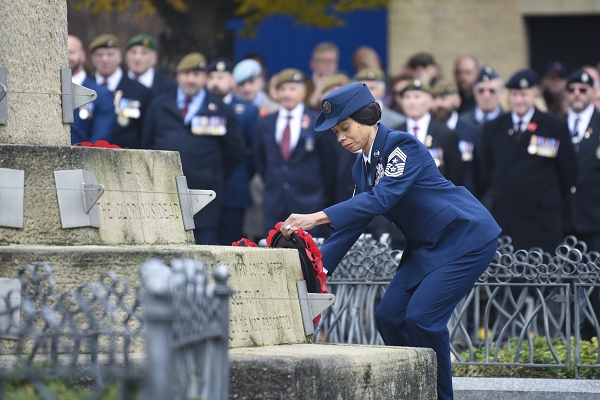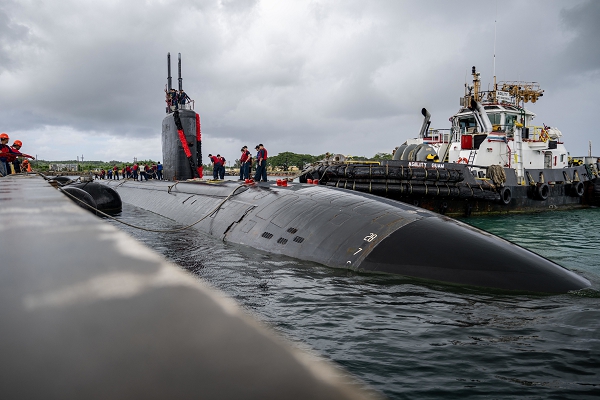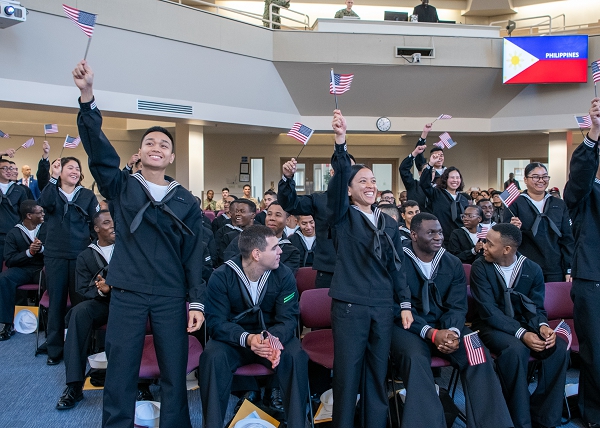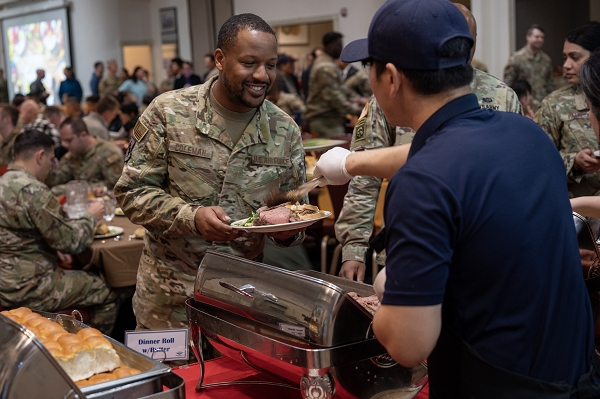- Details
- Hits: 1025

Tucson, Arizona. (November 21, 2024): When America’s warfighters are injured on the front lines, their life depends on a swift, effective evacuation by a team of highly skilled special operators. These personnel recoveries are led by a very special breed… the Combat Rescue Officer. In the photo by Senior Airman Devlin Bishop, Combat Rescue Officer candidates perform flutter kicks on the edge of a pool as part of an extremely rigorous screening process that only a select few will pass.
A Combat Rescue Officer (CRO) is a commissioned officer in the United States Air Force who specializes in training, equipping, and developing rescue personnel while deploying directly into combat as team leaders. They are responsible for organizing and strategizing recovery operations and providing the insights and skills that are essential for rescue missions to succeed.
The selection process for CROs begins at Officer Training School at Maxwell AFB, Alabama and includes leadership reaction courses to assess problem-solving capabilities, moral courage, and ability to make difficult decisions. Performance data from these courses is used to determine which cadets are eligible to continue in the training process.
- Details
- Hits: 1000

Bury St. Edmunds, United Kingdom. (November 10, 2024): “In Flanders fields the poppies blow, between the crosses, row on row.” This opening line of the poem "In Flanders Fields", written by Canadian Lieutenant Colonel John McCrae, describes the poppies growing among the graves of soldiers killed during World War I. In this photo by Technical Sergeant Timothy Moore, U.S. Air Force Chief Master Sergeant Tiffany Griego with the 100th Air Refueling Wing lays a wreath at a war memorial on Angel Hill during a Remembrance Day ceremony. By participating in Remembrance Day, the U.S. is honoring the sacrifices made by our British allies in the “war to end all wars.”
The poppy is a symbol of the blood shed by fallen soldiers in a war that was virtually unprecedented in the slaughter, carnage, and destruction it caused. Over the course of the war, over 880,000 British forces died representing a devastating six percent of the entire adult male population of the country. The war was so bloody, three times as many British forces died in a single battle than have been killed in every combat operation since World War II. The Americans suffered 116,516 military fatalities including 53,402 battle deaths and 63,114 deaths from accidents and disease. After the Civil War and World War II, World War I is the deadliest war in American history.
- Details
- Hits: 1050

Naval Base Guam. (November 19, 2024): In this photo by Petty Officer 1st Class Justin Wolpert, Sailors assigned to the Los Angeles-class fast-attack submarine USS Jefferson City return to their homeport after completing a western Pacific deployment. Assigned to Commander, Submarine Squadron 15 at Polaris Point Naval Base Guam, Jefferson City is one of four Los Angeles-class fast-attack submarines forward-deployed in the Pacific.
Manufactured by Newport News Shipbuilding Company and General Dynamics Electric Boat Division, the Los Angeles-class is the heart of the Navy’s submarine fleet with forty-one ships now on active duty. The USS Jefferson City has a crew of sixteen officers and 127 enlisted and was commissioned on February 29,1992.
- Details
- Hits: 1005

Naval Station Great Lakes, Illinois. (November 21, 2024): The U.S. Navy welcomed a slew of new Americans this week who obtained their citizenship through military service. In this photo by Petty Officer 1st Class John Suits, recruits take the Oath of Allegiance to the United States during a naturalization ceremony in the Recruit Memorial Chapel here. Naturalization ceremonies like these have taken place in more than thirty countries from Albania to the United Arab Emirates. Since 2002, the U.S. has naturalized more than 187,000 members of the armed forces both at home and abroad.
The largest number of naturalizations come from the Army (60%) followed by the Navy (20%), the Air Force (16%) and the Marines (6%). The service with the fewest military naturalizations is the Coast Guard at less than one percent.
Most of these new citizens hail from the Philippines, Jamaica, Mexico, Nigeria, and Ghana representing over thirty eight percent of all naturalizations since 2020. The next five countries of birth — Haiti, China, Cameroon, Vietnam, and South Korea — comprised an additional 16% of military naturalizations from 2020 to 2024.
- Details
- Hits: 1158

Pattaya, Thailand. (November 17, 2024): When American Sailors serving in the Pacific need a chance to rest, they enjoy a friendly welcome from the Thai people. In this photo by Grady T. Fontana, local children greet Navy Lieutenant Commander Jamil A. Khan at a community outreach event while in port in Thailand. Navy League Siam, a civilian organization dedicated to providing hospitality to U.S. Navy vessels, facilitated the event,
Thailand is a long-time military ally and economic partner of the United States. U.S. Navy warships regularly make ports of call to this tiny coastal city and Phuket Island in the south, some five hundred miles from Bangkok. The United States also operates numerous regional offices from the Bangkok Embassy, one of the largest U.S. diplomatic missions in the world.
- Details
- Hits: 976

Kunsan Air Base, Republic of Korea. (November 20, 2024): To most Americans, Thanksgiving began in 1621 when pilgrims in Plymouth, Massachusetts joined Native Americans in a feast to celebrate a successful fall harvest. What most do not know is that the tradition did not become an annual event until the Revolutionary War. In this photo by Captain Kaylin Hankerson, U.S. service members dine during the annual Thanksgiving meal hosted by the Korean American Gunsan Alliance, a good neighbor program to connect U.S. personnel to their local community.
Thanksgiving became an annual event during the war for independence when Americans were trying to unify the nation during this terrible struggle. The Continental Congress decided to declare several days of thanksgiving to help inspire our troops to victory. The first such day fell on Nov. 1, 1777, when news of some victories against the British reached their ears.
Later during the Civil War, President Abraham Lincoln called for a day of thanks to be held on the last Thursday in November. The day would be officially known as Thanksgiving.
During World War I, the Red Cross provided Thanksgiving goodies to troops overseas and some local families in France took Soldiers into their homes for the day. During World War II, K-rations issued to the troops were replaced with turkey and cranberry sauce and in recent conflicts the President of the United States has made surprise visits to the troops.


